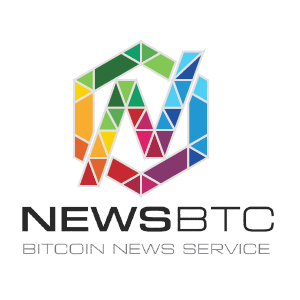HodlX Guest Post Submit Your Post In attention-driven industries or markets like the crypto market , it is essential for new technologies to possess or periodically introduce elements that push the needle, lest they face the risk of falling off. The most common example of these sorts of elements in the crypto industry is user incentives. Restaking is a natural case study of the effects of a lack of sustainable incentives in an attention-driven market. Although it was once a hot topic in crypto due to its potential to elevate the industry’s security landscape, it invariably lost momentum due to an inability of restaking platforms to compensate users adequately for their contributions to economic security. Luckily, nothing is ever truly finished in the crypto industry, and a once-forgotten narrative or use case could resurface with a few minor tweaks and changes. The advent of curators in shared security frameworks offers a glimmer of hope for revitalizing the restaking narrative, ensuring that users are adequately incentivized to continue contributing to the security of blockchain networks and protocols. Later in this article, I’ll define curators and highlight their role in restaking models. But first, let us explore why and how curators came to be. Restaking origins Over the years, blockchain infrastructure has become more modular, scalable and accessible, making it easier to create blockchain products. However, that same rapid development has been missing in security implementation. New networks and protocols must create new security systems from scratch or employ alternatives that are either too expensive or involve significant trade-offs. Restaking emerged as a solution to this problem. It introduced the concept of shared or pooled security, allowing new networks and protocols to borrow the security of more established blockchain networks. Restaking platforms like Eigenlayer, Babylon and Symbiotic enable new blockchain projects to quickly establish a security layer by connecting to larger, more secure projects. These platforms also encourage users to contribute to the economic security of these new projects by committing their already staked assets to the validators or nodes in their system. However, as the restaking narrative grew, the need for scalability became more apparent. Factors like risk management, reward allocation, and complexity management need to be handled to manage the risks associated with staking. Enter curators. What are curators Curators are entities within a shared security framework that manage, optimize and enhance interaction between the system’s components. Their work improves collaboration between these components and efficiency and functionality within the system. Curators take on several forms within a shared security framework and would likely increase as the restaking landscape proliferates. Let’s look at some of the curators in existing restaking frameworks. LRTs (liquid restaking tokens) These asset management entities provide a new layer of functionality by essentially allowing users to reuse already staked assets to contribute to the economic security of other networks and protocols in exchange for additional yield. LRTs provide various benefits, such as enhanced capital extraction, multi-network participation and increased decentralized security. Furthermore, LRT teams excel at handling and acquiring large amounts of stake and creating valuable incentive systems capable of attracting restakers to provide economic collateral, a quality that integrated networks can leverage to achieve desirable outcomes. Operators Operators are a key component of a shared security framework. They are responsible for running network infrastructure components and can also act as curators. This is because they provide several qualities that integrated networks can leverage to develop highly resilient systems and establish best practices. These include the ability to run various forms of network infrastructure, crypto-specific DevOps knowledge, and expertise in managing node redundancy and uptime. Risk managers and research entities Risk managers and research entities exist in various forms, including applied research groups, consulting agencies and independent or freelance researchers. Regardless of their form, though, they are responsible for identifying and quantifying risks within the ecosystem. Their work ensures the network’s overall security and helps all parties make informed decisions while establishing best practices for the industry. Conclusion Only the narratives that capture and maintain user interest remain relevant in attention-driven markets. In the earlier days, restaking platforms could not keep users incentivized enough to continue contributing to economic security, leading to a drop in momentum. However, the emergence of curators in shared security frameworks represents a new opportunity for restaking’s resurgence. Network participants can leverage these curators to design valuable incentive systems, develop highly resilient systems and manage risk exposure, which could attract user attention and revive the restaking ecosystem. All that remains is to wait and see if the market accepts this new paradigm and if networks adopt this system to drive adoption and generate interest among the crypto faithful. Filipe Gonçalves is the co-founder and CEO of Inceptive Labs , a Dubai-based venture studio specializing in DeFi innovations, and the lead contributor of InceptionLRT, the first modular aggregation layer for restaking. With over a decade of experience in fintech and DeFi, Filipe has pioneered products bridging traditional finance with decentralized systems. Check Latest Headlines on HodlX Follow Us on Twitter Facebook Telegram Check out the Latest Industry Announcements Disclaimer: Opinions expressed at The Daily Hodl are not investment advice. Investors should do their due diligence before making any high-risk investments in Bitcoin, cryptocurrency or digital assets. Please be advised that your transfers and trades are at your own risk, and any loses you may incur are your responsibility. The Daily Hodl does not recommend the buying or selling of any cryptocurrencies or digital assets, nor is The Daily Hodl an investment advisor. Please note that The Daily Hodl participates in affiliate marketing. Generated Image: Midjourney The post The Restaking Renaissance – How Curators Could Revive the Ecosystem appeared first on The Daily Hodl .




















